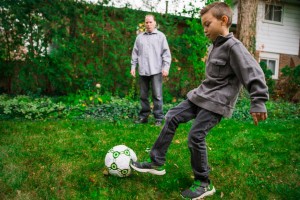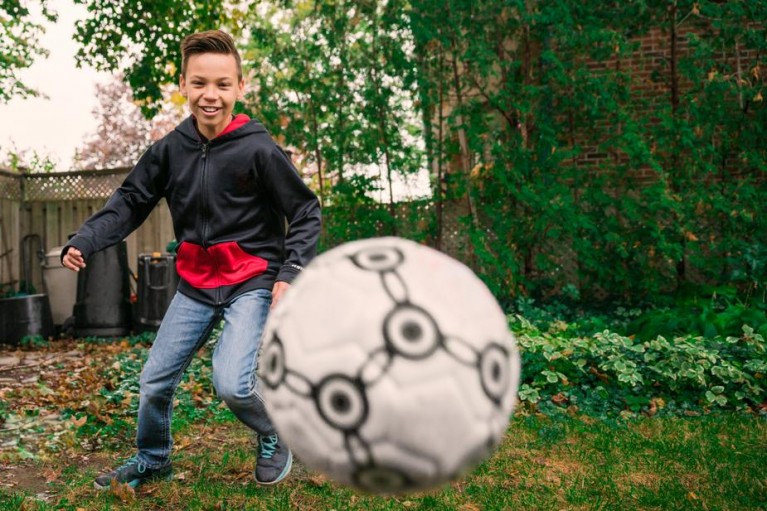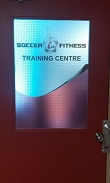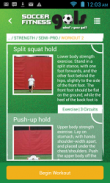Is training for technical skills really the best use of soccer players’ time during a period of sustained inactivity? … the answer is no.
Youth soccer players: if you haven’t already, you need to add aerobic high-intensity interval training into your weekly at-home training routine immediately.
A lot can change in 14 days.
Two weeks ago, youth soccer players across the country were in the thick of their pre-season training, with practices, exhibition games, and supplemental technical and physical training eating up the majority of their free time, 7 days per week.
The declaration of the COVID-19 virus as a worldwide pandemic, and subsequent government-mandated self-isolation and social distancing protocols, suddenly changed all of that. In the span of a week, schools, training, games, clubs, academies, and gyms all closed down. By Monday March 16th, all structured programs were closed, leaving players with a host of free time, and their parents scrambling to find something to fill it.
Soccer clubs, academies and some trainers have begun sharing and posting videos and documents outlining various supplemental technical skills training for players to complete on their own. They hope to encourage children to stay active and maintain their technical ability and fitness during their time off.
But is training for technical skills really the best use of soccer players’ time during a period of sustained inactivity? From a physical and physiological standpoint, the answer is no.
Aerobic endurance, which forms the backbone of all physical abilities in virtually all sports, must be the focal point of supplemental at-home training programs for youth soccer players during the COVID-19 self-isolation and social distancing time period.
Doing keep-ups in the back yard or passing the ball against the wall – although it will help you to maintain some of your technical skills – is not going to help you maintain your aerobic fitness.

Photo by Nicole De Khors from Burst
Why is aerobic endurance training so important for soccer players during their time off?
There are 3 reasons:
- Aerobic fitness is the “first thing to go” once athletes become inactive
- Aerobic fitness can decrease significantly – up to 20% – with as little as 10 days of inactivity
- Re-training of aerobic endurance following a decease in fitness – to get back to previous fitness levels – can take between 8-10 weeks to accomplish
The loss of aerobic endurance – commonly referred to as “de-training” – following periods of inactivity in athletes is well documented. Maximal oxygen uptake (Vo2Max) and muscle oxygen uptake (Vo2); the two best markers of aerobic fitness in athletes, can decrease by up to 20% and 10%, respectively, with just 10 days of inactivity (Nugroho 2009).
Furthermore, aerobic fitness improvements gained through 8-10 weeks of 2-3 training sessions per week of high-intensity aerobic training in athletes are “completely lost” after 4 weeks of inactivity, and that, in order to return to their previous fitness level, athletes who experience this loss of fitness would be required to repeat the same 8-10 week training program again, from the beginning (Godfrey 2008).
What this means for soccer players is simple: either you replace the regular aerobic training you had been doing during team training and games with regular, high-intensity aerobic training sessions on your own, or you risk going back to “square one” – losing all of the fitness you had built up since the start of the new year.
Doing keep-ups in the back yard or passing the ball against the wall – although it will help you to maintain some of your technical skills – is not going to help you maintain your aerobic fitness.
Youth soccer players: if you haven’t already, you need to add aerobic high-intensity interval training into your weekly at-home training routine immediately. Not only will maintaining your aerobic endurance help you to stay prepared for whenever training resumes, it will also help you to reduce fatigue and better perform your at-home technical workouts.
Below is a sample 3 day per-week program that can be completed on your own, while self-isolating and socially distancing, to help get you started.
Sample Aerobic High-Intensity Interval Program:
- Day 1:
- Warm-up: 5 minutes jogging and stretching
- 4 x (4 minutes running at 80% intensity / 4 minutes running at 60% intensity)
- Day 2:
- Warm-up: 5 minutes jogging and stretching
- 2 x 5 x (1 minute running at 90% intensity / 1 minute passive rest) with 5 minutes rest between sets
- Day 3:
- Warm-up: 5 minutes jogging and stretching
- 5 x (30 seconds running at 100% intensity / 2.5 minutes passive rest)
Our mobile fitness app, Soccer Fitness Gols, also contains more comprehensive, customized at-home workouts, including 3 separate Aerobic Endurance programs with difficulty levels ranging from “Beginner” to “World Class”, to choose from, and can be downloaded here:




